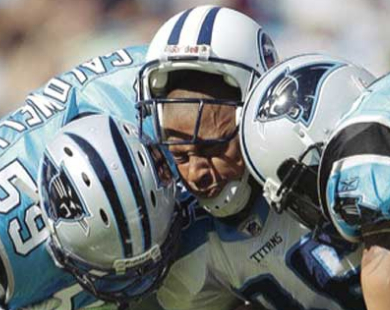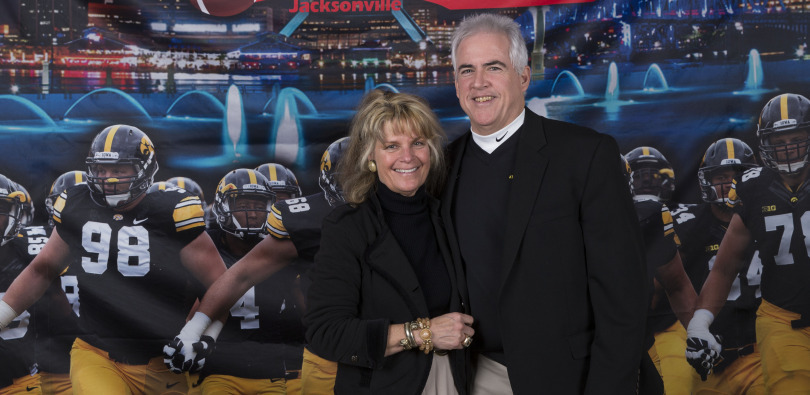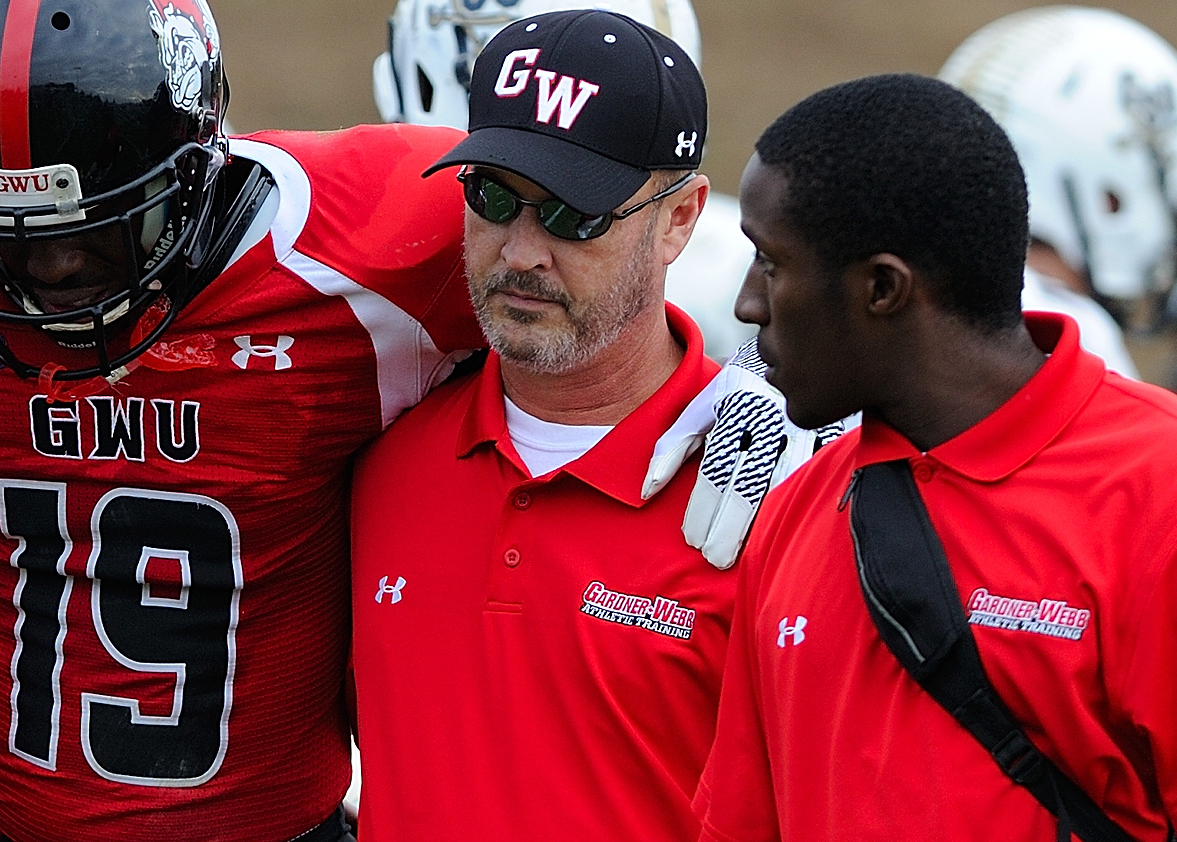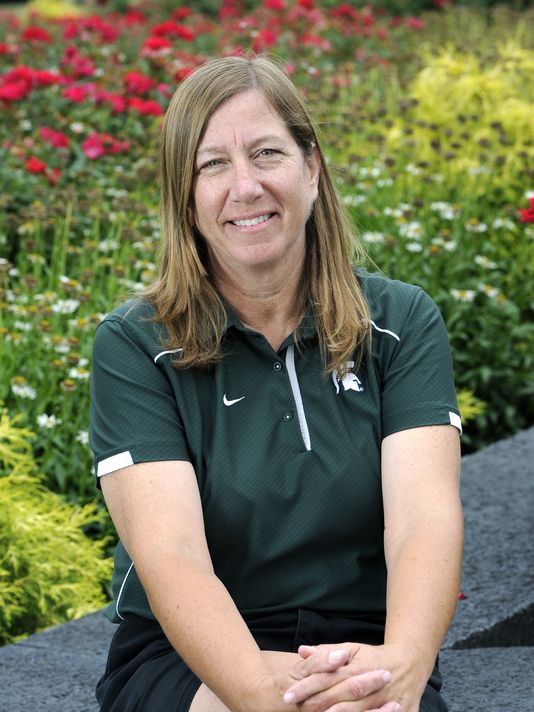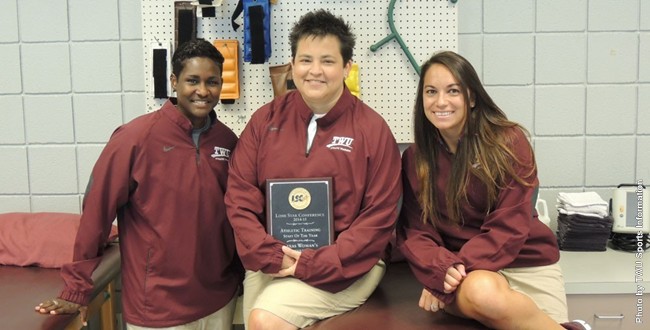
The athletic training staff at Texas Woman’s University was honored by their peers with the 11th annual Lone Star Conference Athletic Training Staff of the Year award for the 2014-15 academic year.
TWU claimed the athletic training award for the league, which consists of nine member institutions with seven in Texas, one in Oklahoma and one in New Mexico.
Kris Ring, head athletic trainer, guides the Pioneers athletic training staff with assistance from Valerie Stevenson and Nikki Sanchez along with students Kimberly Smith, Taylor Wooten and Jesse Frankland.
The LSC Athletic Training Staff of the Year award is presented annually to the top institution as voted by the head athletic trainer of each member school.
The purpose of the award is to raise awareness of the athletic training profession. Criteria for the award include the athletic training staff’s hospitality toward visiting athletic trainers and teams; preparedness with supplies, equipment and services for visiting athletic trainers and teams; preparedness for emergency situations; and care for injured athletes from visiting teams.
Lone Star Conference Athletic Training Staff of the Year
2014-15 Texas Woman’s
2013-14 Angelo State
2012-13 Tarleton State
2011-12 Midwestern State
2010-11 Eastern New Mexico
2009-10 Midwestern State
2008-09 Eastern New Mexico and Southwestern Oklahoma
2007-08 Midwestern State, Southeastern Oklahoma and Northeastern State
2006-07 Abilene Christian and Southwestern Oklahoma
2005-06 Angelo State and Southeastern Oklahoma
2004-05 Angelo State and Southwestern Oklahoma
ORIGINAL ARTICLE:
http://www.lonestarconference.org/news/2015/7/30/GEN_0730150535.aspx?path=general

